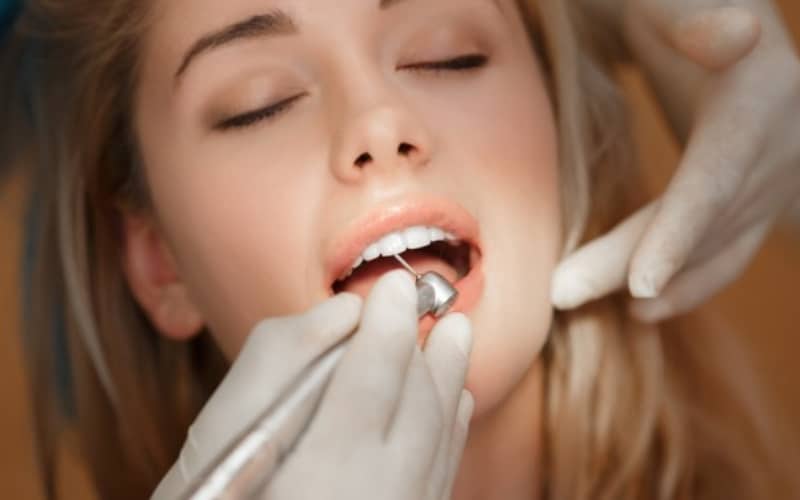
Tooth sensitivity can be a frustrating and painful issue that affects many people. The discomfort that comes with consuming hot or cold food and beverages can make simple daily tasks seem challenging. While there are various causes for tooth sensitivity, one possible solution that many patients may not be aware of is occlusal adjustment.
But can it really solve your tooth sensitivity issues? Dentists explain how this procedure works and how it might be the answer you’ve been looking for.
What Is Occlusal Adjustment?
Occlusal adjustment is a dental procedure designed to adjust the alignment of the bite, specifically how the teeth come together when you close your mouth. If your teeth are misaligned or if your bite is off, it can lead to excessive pressure on certain areas of your teeth and gums.
This pressure may contribute to tooth sensitivity, tooth pain, or even other oral health issues such as jaw pain, headaches, and gum recession.
During an occlusal adjustment, a dentist will carefully examine your bite and make small adjustments to the surfaces of your teeth. This is done using specialized dental tools to reshape the biting surfaces to ensure that the upper and lower teeth align correctly.
How Does Occlusal Adjustment Relieve Tooth Sensitivity?
Tooth sensitivity occurs when the underlying dentin of the tooth is exposed due to receding gums, worn enamel, or damage to the tooth structure. When your bite is misaligned, certain areas of your teeth may experience more pressure than others.
This can lead to gum recession or worn-down enamel, both of which expose the sensitive parts of the tooth, causing discomfort when eating or drinking certain substances.
Occlusal adjustment helps by:
Balancing The Bite
Occlusal adjustment ensures that pressure is distributed evenly across teeth by adjusting the contact points between them. This reduces localized pressure on certain teeth that might be causing sensitivity.
Preventing Enamel Wear
Misalignment of the teeth often leads to uneven wear of the enamel. This can expose the sensitive dentin layer of your teeth. By correcting the bite, occlusal adjustment reduces the risk of further enamel wear.
Alleviating Jaw Pain
A misaligned bite can also lead to jaw pain or temporomandibular joint (TMJ) issues. These conditions can contribute to tooth sensitivity, as clenching or grinding teeth can cause additional strain on the teeth and gums. Occlusal adjustment helps prevent or alleviate these problems.
Common Causes of Tooth Sensitivity
Before jumping into the role of occlusal adjustment in relieving sensitivity, it’s important to understand some common causes of tooth sensitivity. These include:
- Gum Recession: When gums recede, the tooth roots become exposed, leading to sensitivity to hot or cold foods and beverages.
- Enamel Erosion: The enamel on teeth can wear away due to acidic foods, poor oral hygiene, or grinding. This exposes the dentin underneath, which is much more sensitive.
- Tooth Grinding or Clenching: Bruxism (teeth grinding) can cause tooth sensitivity due to excessive pressure on the teeth, leading to worn enamel or even cracks in the teeth.
- Tooth Decay: Cavities can expose the nerves of the teeth, leading to sharp sensitivity.
If your tooth sensitivity is caused by bite misalignment, occlusal adjustment may be a highly effective treatment option.
The Benefits of Occlusal Adjustment for Tooth Sensitivity
1. Long-Term Solution
Unlike temporary remedies, such as desensitizing toothpaste, occlusal adjustment addresses the root cause of your tooth sensitivity: misalignment of your bite. This makes it a long-term solution that helps maintain comfort and prevent future sensitivity issues.
2. Improved Comfort
By ensuring that the bite is properly aligned, occlusal adjustment provides overall comfort in the mouth. Patients often notice reduced tooth pain, less jaw discomfort, and relief from pressure on sensitive teeth.
3. Prevention of Further Damage
When your teeth are misaligned, the excessive pressure on certain teeth can lead to damage, including cracked or fractured teeth. By redistributing the pressure more evenly, occlusal adjustment can help protect your teeth from future damage.
4. Enhanced Oral Health
With improved alignment, patients may notice better gum health and a reduced risk of gum recession. By correcting an improper bite, occlusal adjustment promotes overall oral well-being.
What To Expect During an Occlusal Adjustment?
- Initial Consultation: During your first visit, the dentist will examine your teeth and bite. They may use x-rays or impressions to get a clear view of your bite alignment.
- Adjusting the Bite: The dentist will carefully remove small amounts of tooth material from specific areas of the teeth to improve the bite. This process is precise and usually does not cause discomfort.
- Follow-Up Visits: After the adjustment, you may need follow-up visits to ensure that the changes made to your bite have alleviated the sensitivity. Your dentist will check your bite and make any necessary tweaks.
Tooth sensitivity can be a frustrating issue, but if your sensitivity is caused by an improperly aligned bite, occlusal adjustment might be the key to solving your problem.
By redistributing pressure on your teeth and addressing the root cause of the issue, this dental procedure can provide lasting relief from tooth sensitivity.
If you are struggling with sensitivity and suspect that misalignment might be the culprit, consult with a dentist in Toms River to explore whether occlusal adjustment is right for you.






